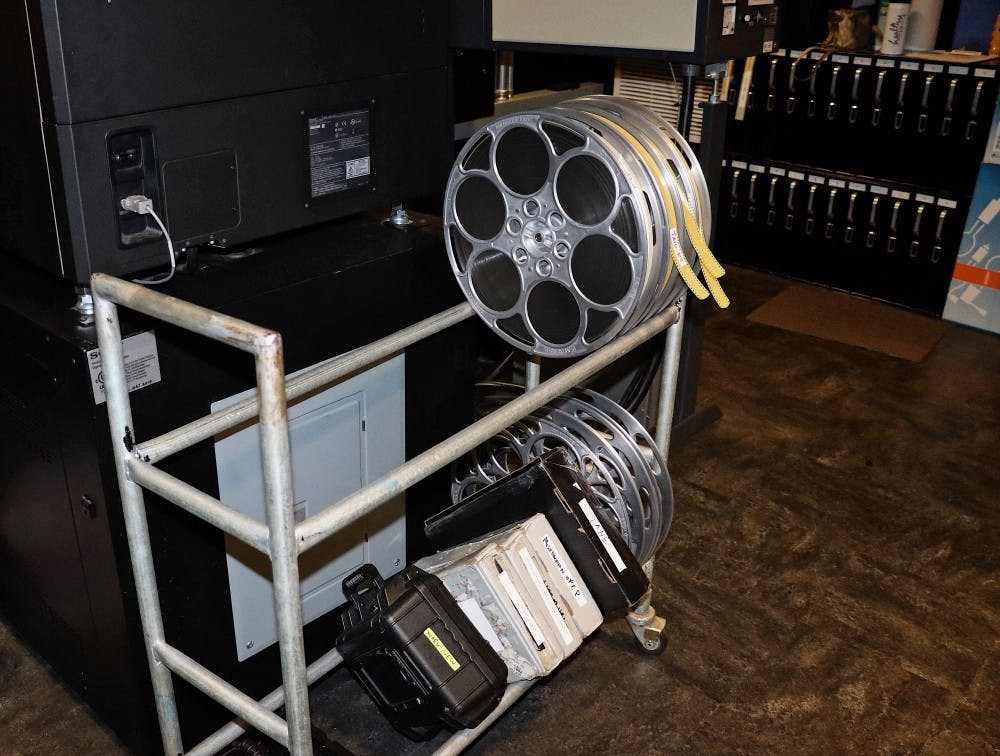Film has been around since the 1890s, and a film archivist’s mission is to preserve them, which in turn preserves history. On the IU campus, film is kept in the IU Libraries Moving Image Archive, inside of the Herman B Wells Library.
The IULMIA contains more than 86,000 items, making it one of the world’s largest educational film collections, according to their website. The Indiana Daily Student sat down with Rachael Stoeltje, the director of the IU Libraries Moving Image Archive to talk about film. Answers have been edited for clarity.
INDIANA DAILY STUDENT: What is the mission of the IULMIA?
STOELTJE: We have passive preservation, which is cold storage, and next year, they’re building an even better facility — one of the best in the country — it’ll be 38 degrees for film, which is perfect. We also digitally preserve, and a lot of our staff is here because we’ve launched this mass digitization of film, so we’re scanning them at high levels and then preserving those digital copies. Access is the other key component to what we do, whether that’s on the flatbed for individual researchers, or digitizing and putting them out, or screening them publicly.
How do you keep the films in good condition?
Film is really long term, and it can be preserved for hundreds of years if properly stored. One of the first steps that archives can always do is keep them cool and dry. So our auxiliary library facility is at 50 degrees, 30-percent relative humidity. Our new facility is going to be 38 degrees and 30-percent relative humidity, which is ideal. Moisture and heat are what you’re fighting the most. We also re-can things into polypropylene, which are archival plastic cans.
How does film deteriorate if it’s not preserved properly?
Heat and moisture are particularly bad, but acetate film — which is what a lot of the collection is — actually decomposes because it is organic material. Things like heat and moisture are going to make them deteriorate faster.
With acetate film, it is actually a chemical breakdown, and what actually happens is it starts off-gassing acetic acid as it breaks down. What that means is that not only is there a really stinky smell, but the film starts to shrink, and the film sprockets that help it go through the projector start to shrink and get closer together.
Then you can’t actually project it because the teeth of the projector will start to eat into the film. It also becomes brittle, and it will break when you’re projecting it. Also over time, when it deteriorates fully, it’s like a little hockey puck and it’s unusable.
Why is film preservation important?
Film preservation has a relatively short history, around 1895. The first 20 or 30 years of early silent films, about 80 percent of them have been lost. There wasn’t a clear reason to keep them for future use, so companies who put them out to generate revenue threw them out once they ran their course.
There were no ways to redistribute on home movie systems, so if you think about what’s been created over time, and what we now know today, we’ve lost so much of our cultural heritage.
Even in collections like ours, a lot of what we hold here are amateur films, documentary films and home movies. They capture parts of our culture, parts of our history, especially with collections like ours with amateur footage and home movies, stuff that isn’t actually anywhere else in the world, really. So, it’s really preserving our history by preserving film.
How does being integrated with IU affect your archive?
A huge part of what we also do, and what I’m so proud of, is education, outreach and training. It’s not only engaging the IU students here, but we tend to have 10 to 15 students that work for us and we actively mentor them.
We spend a lot of time teaching and doing things like First Thursdays, and a lot of my international work is about training and outreach, which is a core part of IU’s mission.
It’s important not only for people to understand what film preservation is, but just in general for teaching the skill set to move forward for young professionals. We have also done a lot of things in the past in education for the general public.





